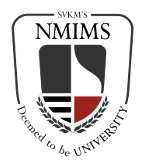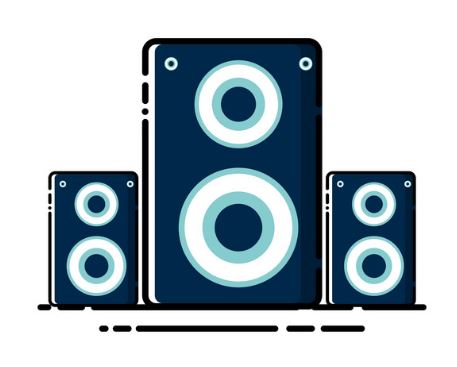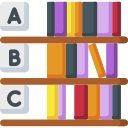
NMIMS Mumbai School of Performing Arts
The NMIMS School of Performing Arts (SoPA), Mumbai, operates under NMIMS Deemed-to-be University, a Category I institution accredited with NAAC A+. SoPA offers a three-year degree program in Western Contemporary and Indian Music, providing students with specialized training in various disciplines. These courses not only enhance your conceptual understanding but also help you master your chosen instrument, refine your performance skills, and build a robust professional network—setting you up for success in the music industry.
At SoPA, education goes beyond obtaining a degree; the school is committed to providing a holistic learning experience that merges theoretical knowledge with practical application. This blend prepares students for live performances, studio recordings, and much more. The curriculum integrates principles from the ancient “Gurukul” system with modern technology to meet the evolving demands of the music world.
SoPA boasts a faculty of highly qualified, internationally recognized professionals, ensuring students receive top-tier guidance. Regular music "baithaks" (gatherings) and workshops are integral parts of the program, offering students opportunities to hone their skills and broaden their musical horizons. Graduates from SoPA can pursue diverse careers, including performing artist, teacher, researcher, acoustics expert, composer, or author, among many others.
Courses
Highlights
|
Quick View of NMIMS School of Performing Arts |
|
|
Established In |
2018 |
|
Location |
Mumbai |
|
College Type |
Private |
|
Affiliation |
UGC |
|
Approved to |
NAAC |
|
Number of Courses |
2 Courses |
|
Facilities |
Library, Gym, Sports, Music Room, Wi-Fi, Auditorium |
|
Bachelor of Arts (Honours) (Music - Indian Music) Intake |
20 |
|
Bachelor of Arts (Honours) (Music - Western Contemporary Music) Intake |
30 |
NMIMS Mumbai School of Performing Arts Courses
We recognize that Indian Music requires a holistic and immersive approach to nurture young musicians across various disciplines. Our aim is to create an environment that fosters willingness, harmony, and discipline, while offering a dynamic and innovative curriculum. This curriculum is carefully designed to ignite and sustain students' curiosity, keeping their passion for learning vibrant throughout their training journey.
By incorporating specialized techniques, our program ensures authenticity and rigor in our mission to develop and refine young musical talent. We prepare students not only to master their craft but also to explore thriving career opportunities in the ever-expanding world of music.
- Bachelor of Arts (Honours) (Music - Western Contemporary Music)
- Bachelor of Arts (Honours) (Music - Indian Music)
Career Opportunities
After the course, students may explore various facets of the music profession which are as follows:
- As a Performing Artist
- As a Music Teacher
- As a Music Composer
- As a Recording Artist
- As a Research Scholar etc.
NMIMS School of Performing Arts Admission
With its BPA degree, the NMIMS School of Performing Trades in Mumbai offers India's first-degree programme in the field of Contemporary Western Music. This institute's Bachelorette of Performing Trades (BPA) degree entails an intertwined study of both theoretical and practical knowledge of Music.
Scholars can earn a three-time Bachelor of Trades (Western Contemporary Music) or a Bachelorette of Trades (Indian Music) at this institute. Eligible campaigners seeking admission to the BA programme must upload a videotape of their performance to YouTube (as an unrecorded videotape) and include the link in their operation form.
Online Registration & Payment of Registration Fee
- Visit the official NMIMS website (www.nmims.edu) to complete the online registration.
- The registration fee is ₹2,000/-, which is non-refundable and non-transferable.
- Refer to the details provided in the online registration form before proceeding with payment.
Guidelines for Uploading Photograph
Candidates must ensure their photograph meets the following specifications:
- Format: JPEG (.jpeg)
- Dimensions: 200 pixels (height) × 150 pixels (width)
- File size: Should not exceed 500 KB
- Background: White or light-colored
Visibility:
- Eyes must be open and clearly visible.
- The face should be centered and distinctly visible.
- Shoulders should be visible in the photograph.
- The photograph must be recent (not older than six months).
- Photos with caps, goggles, or head coverings (except for religious reasons) will be rejected.
Guidelines for Uploading YouTube Video Link in Registration Form
Candidates are required to submit a self-recorded audition video following these guidelines:
Duration: Minimum 2 minutes, maximum 5 minutes (content beyond 5 minutes will not be evaluated).
Recording:
- Must be live-recorded using a camera phone or DSLR with clear audio capture.
- No editing, processing, or enhancements (audio or video) are allowed.
Video Content:
- The candidate’s face should be clearly visible throughout.
- The sound of the instrument (if applicable) should be loud and clear.
YouTube Upload:
- The video must be uploaded as an "Unlisted" video on YouTube.
- Private videos will not be considered for assessment.
Admit Card & Audition Process
Candidates must download their admit card from www.nmims.edu before appearing for the audition.
Entry Requirements:
- No candidate will be allowed to appear for the audition without an admit card or without a photograph on the admit card.
- Candidates must carry one original ID proof along with a photocopy.
Accepted ID Proofs:
- Voter ID
- Passport
- School/College ID
- Aadhaar Card
- Driving License (Learner’s license is not accepted)
- 12th Admit Card
- PAN Card
Selection Criteria
For Bachelor of Arts (Honours) (Music - Western Contemporary Music)
Shortlisted candidates will be invited to the auditions via a call letter that will be posted on the website. The following will be part of the audition process:
- All qualified applicants must upload a video of their performance to YouTube (as a private video) and include the link in their application form.
- Shortlisted candidates will then be called in for auditions on specific dates.
- The Dean has interviewed: The School publishes a merit list, from which admission offers are made.
- Candidates should check their merit list status on a regular basis.
- The selected candidates must report for fee payment within the time frame specified.
For Bachelor of Arts (Honours) (Music - Indian Music)
The following are the selection criteria for the BA (Indian Music) programme:
- To apply for admission to the B.A. Music (Indian Music) programme, all eligible candidates must upload a video of their performance to YouTube (as an Unlisted video) and include the link in the application form.
- The candidates will then be shortlisted and invited to the audition on the specified date.
- The merit list will be determined solely by the audition process.
- Admission offers are made on the basis of merit; waitlisted candidates must check their merit list status on a regular basis, and selected candidates must report for fee payment.
NMIMS School of Performing Arts Course & Eligibility
|
Course |
Eligibility |
|
Bachelor of Arts (Honours) (Music - Western Contemporary Music) |
A pass in Class 12 or an equivalent grade in any subject with a minimum of 50% |
|
OR |
|
|
· A pass in Class 12 or equivalent from the IB Board (should be either an IB certificate or a DP) with 24 credits, including 3 HL (12 credits) and 3 SL (9 credits) from any stream. |
|
|
· Candidates over the age of 35 are ineligible. |
|
|
· Candidates who did not pass their Class 12 or equivalent exam on the first try are ineligible to apply. |
|
|
Bachelor of Arts (Honours) (Music - Indian Music) |
A pass in Class 12 or an equivalent grade in any subject with a minimum of 50% |
|
OR |
|
|
· A pass in Class 12 or equivalent from the IB Board (should be either an IB certificate or a DP) with 24 credits, including 3 HL (12 credits) and 3 SL (9 credits) from any stream. |
|
|
· Candidates over the age of 35 are ineligible. |
|
|
· Candidates who did not pass their Class 12 or equivalent exam on the first try are ineligible to apply. |
NMIMS MUMBAI SCHOOL OF PERFORMING ARTS FEE
|
Courses |
Duration |
Fees Per Annum |
|
Bachelor of Arts (Honours) (Music - Western Contemporary Music) |
4 years |
4,50,000/- |
|
Bachelor of Arts (Honours) (Music - Indian Music) |
4 years |
2,00,000/ |
Note: Online Registration Fee is Rs. 2,000/-
NMIMS MUMBAI SCHOOL OF PERFORMING ARTS REVIEW
|
Placements |
4.0 |
|
Infrastructure |
4.7 |
|
Faculty & Course Curriculum |
5.0 |
|
Crowd & Campus Life |
4.0 |
|
Value for Money |
5.0 |
NMIMS MUMBAI SCHOOL OF PERFORMING ARTS CUT OFF
The cut-off for NMIMS Mumbai's School of Performing Arts represents the minimum eligibility score or rank that a candidate must achieve to qualify for admission into its programs. The cut-off is determined based on various factors and may vary each year depending on the following:
1. Entrance Exam Performance:
- Admission to the School of Performing Arts typically involves a university-specific entrance exam or an aptitude test assessing the candidate’s talent, skills, and passion for performing arts. The cut-off score is the benchmark that determines eligibility for the next stage of the admission process.
2. Availability of Seats:
- The total number of seats available in each program influences the cut-off. Limited seats often result in a higher cut-off due to increased competition.
3. Number of Applicants:
- A higher number of applicants increases competition, which can lead to a higher cut-off to select the most qualified candidates.
4. Program Specialization:
- Different performing arts programs, such as music, dance, or theatre, may have distinct cut-offs depending on the popularity and demand for that particular specialization.
5. Category-Based Cut-Offs:
- If applicable, there may be separate cut-offs for different categories, such as general, reserved, or special quotas.
6. Qualitative Assessment:
- For fields like performing arts, qualitative aspects such as auditions, portfolios, or interviews play a significant role. While a cut-off score might be a baseline, the final selection often depends on the evaluation of creative and performance abilities.
NMIMS MUMBAI SCHOOL OF PERFORMING ARTS RECRUITERS
Faculty (10)
';|
S.no |
Faculty |
|
1. |
Dr. Manas Vishwaroop Vocal |
|
2. |
Mr. Srinjay Banerjee Guitar |
|
3. |
Mr. Emmanuel Simon World Percussion & Theory |
|
4. |
Mr. Anurag Naidu Piano |
|
5. |
Mr. Shivang Kapadia Drums |
|
6. |
Ms. Vishakha Mody Environmental Studies |
|
7. |
Mr. Tejasvi Rao Music Production |
|
8. |
Mr. Anuj Kothari Communicative English |
|
9. |
Mr. Samarth Talia Bass player |
|
10. |
Mr. Shashank Das Bass Player |
Facilities

AC Classrooms

Music Room

Ransomware by ./M789

Sports Complex

Wi-Fi Campus

Auditorium

Labs
Contact
Bhakti Vedant Swami Marg, Near Cooper Hospital, JVPD Scheme, Vile Parle (West), Mumbai.
karuna.dhamane@nmims.edu
-
PGDM-Post Graduate Diploma in Management
Total Fee: INR 745000
-
B.Com Bachelor of Commerce
Total Fee: INR 240000
-
PGDM-Post Graduate Diploma in Management
Total Fee: INR 745000
-
B.Com Bachelor of Commerce
Total Fee: INR 240000
-
PGDM-Post Graduate Diploma in Management
Total Fee: INR 745000
-
B.Com Bachelor of Commerce
Total Fee: INR 240000
-
PGDM-Post Graduate Diploma in Management
Total Fee: INR 745000
-
B.Com Bachelor of Commerce
Total Fee: INR 240000
Highlights
- International Institute of Business Studies (IIBS) is an AICTE Approved college which is recognized by Ministry of HRD, Government of Indias
- IIBS rated India’s No.1 emerging B-School in placement by Samaja Parivarthana
- Faculty of IIBS consists of experienced corporate faculty with 65% Ph.D. holders
- Ranked 2nd among 'Top 10 Southern B Schools' by Silicon India, 2017
- Ranked 3rd in Placement among the Best B-School in India 2017 by Silicon India
Modern Facilities
- Smart Classroom: IIBS provides fully equipped classroom with air-conditioned, projectors, remote controlled LCD and high speed connected computers and cordless microphones
- Library: It is fully equipped by highly information recourses like latest periodicals, reference texts, management text books, national and international journals and DVDs and well organized
- Digital Library: Students of IIBS can be access the digital library through any computers by using their ID and password
- Auditorium: IIBS auditorium is fully furnished and laced with all modern devices to more impactful view
- Hostel: IIBS provides hostel accommodation for boys and girls with mesh facility
Conducting IIMs have been changed the pattern of the CAT exams several times over the years. It is extremely beneficial for the aspirants to know the CAT paper pattern as it helps in preparation and the aspirants can prepare according to the pattern and weightage of the topics.
Overview of the Exam Pattern of CAT 2020
| Mode of the Exam | Online Only |
|---|---|
| Total number of Questions | 100 |
| Total Marks | 300 |
| Duration of the Examination | 3 hours (180 minutes) |
| Sectional Division of the Paper | 3 sections |
| Types of the Questions | Both MCQs and Non MCQs |
| Marking Scheme |
For Correct Answers → +3 marks For Incorrect Answers → -1 mark For Unattempted Questions → No marks |
| Name of the Sections |
1. Verbal Ability & Reading Comprehension 2. Logical Reasoning & Data Interpretation 3. Quantitative Aptitude |
This Exam is conducted once in a year usually in the month of November on online mode and it is expected that this year this exam will held in the last week of November. The question paper contains 100 questions to be solved in 3 hours. 3 marks are assigned for correct answer and 1 mark is deducted for wrong answer in CAT Exam. English is the only medium of answering the questions. Each question consists of four choices from which only one is correct, candidates have to select the right answer from the given options.
CAT question paper consists of three sections divided as
- 1. Verbal and Reading Comprehension (VARC)
- 2. Data Interpretation & Logical Reasoning (DI & LR)
- 3. Quantitative Ability (QA)
Overview of the Exam Pattern of CAT 2020
| Section’s Name | Number of Questions | Duration (in mins) |
|---|---|---|
| Verbal and Reading Comprehension (VARC) | 34 | 60 |
| Data Interpretation & Logical Reasoning (DI & LR) |
VA → 10 Questions RC → 24 Questions |
60 |
| Quantitative Ability (QA) |
DI → 16 Questions LR → 16 Questions |
60 |
| Total | 100 | 180 minutes (3hours) |
Verbal Ability and Reading Comprehension Section
This section is a combination of two sub-sections namely Verbal Ability (VA) and Reading Comprehension (RC). The main focus of this section is on the English language skills of the candidates and how they understand and elucidate the paragraphs and Passages. This section consists of 34 questions, 10 questions of Verbal Ability and 24 questions of Reading Comprehension. Verbal ability sub-section consists of questions related to Para-jumbles, Summary based questions, Sentence Correction and Completion. The other sub-section, Reading Comprehension is based on the questions related to Vocabulary, title etc.
Logical Reasoning & Data Interpretation Section
This section is also divided into two sub-sections, one is Logical Reasoning (LR) and other is Data Interpretation (DI). A total of 32 questions are asked in this section, 16 questions from both the sub-section. LR section contains solvable questions generally from the topics like inequalities, symbol operations, direction sense test etc. On the other hand DI section is a little difficult and time-consuming section as it consists of several confusing data case lets questions. This section contains tricky question and a little mistake in understanding the case lets can lead the candidates to attempt all the questions from a particular set incorrectly.
Quantitative Aptitude Section
This section is a standalone section which comprises only numerical questions from different topics of Math. A total of 34 questions are asked in this section. This section contains questions based on Basic Arithmetic, Number System, Geometry, Algebra, Modern Math etc. The questions in this section ranges from easy to moderately high and can be answered easily with proper practice of the syllabus of Quantitative Aptitude.

|
Prof. Prabhakar H
B.Sc., PG in HRD, PG in Training & Development |

|
Prof. Prabhakar H
B.Sc., PG in HRD, PG in Training & Development |

|
Prof. Prabhakar H
B.Sc., PG in HRD, PG in Training & Development |

|
Prof. Prabhakar H
B.Sc., PG in HRD, PG in Training & Development |

|
Prof. Prabhakar H
B.Sc., PG in HRD, PG in Training & Development |

|
Prof. Prabhakar H
B.Sc., PG in HRD, PG in Training & Development |
Facilities













CAT 2020 will be conducted in the following cities:
| Port Blair | Kurnool | Nellore | Tirupati |
| Vijaywada | Visakhapatnam | Chittoor | Itanagar |
| Dibrugarh | Guwahati | Silchara | Aurangabad |
| Gaya | Muzaffarpur | Patna | Chandigarh |
| lorem | lorem | lorem | lorem |
Contact Us
#75, Muthugadahalli, Bangalore North Jala Hobli, near International Airport airport(New Airport), Bangalore ( Karnataka)
admission@iibsonline.com









